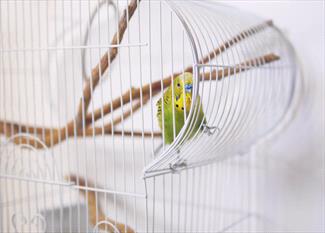
Photo courtesy of Depositphotos
In a noble attempt to teach children empathy and how to be humane to animals, numerous schools across the U.S. have pets that live in the classroom. These animals may include invertebrates such as walking sticks or ant farms, or they may be higher up the evolutionary tree such as fish, birds, reptiles, and small mammals. The presence of animals can be really beneficial for students. For instance, fish can be calming to watch, ants display societal structure, and the opportunity to pet a tarantula may help a child to fear spiders less than she did previously. Some children may become animal lovers after spending time with a classroom pet.
However, like all human interactions with animals, in the classroom we need to take into account not only the welfare of the animals but also the inherent risks to humans. In fact, a few states such as California even address this topic in their laws.
For welfare, teachers should plan ahead as to what species of animal may be suitable for their specific classroom environment and the ages of their students. Many children younger than about six years old do not understand how to handle animals appropriately and are therefore at risk of injuring the animal or being injured themselves when the animal tries to escape. Fish in a tank that cannot be handled may be fine for this age group, but a hamster or rabbit may be inadvertently dropped or it may bite or scratch the child. While older children should be more capable of listening to and adhering to instructions for proper handling and care, they will still need supervision.
The welfare of the children also need to be considered. Some children may be allergic to certain species. Other children may fear certain species. A child who spends the school year sniffling and sneezing in the classroom or afraid of the snake in the aquarium is bound to learn less and have a more negative school experience.
Some species may not be appropriate because of potential zoonotic diseases that can spread from animals to humans. For instance, reptiles are more likely to have Salmonella than other species. This can be a particular problem to children under five years of age, due to their immature immune systems, and immunocompromised people. It is also a concern if the children eat in the classroom, as is often the case in elementary schools.
Regardless of the type of classroom pet, children should be taught good methods of handwashing and cleaning of any surfaces where the pet has been.
Additionally, the pets will need to adapt to the classroom environment. Nocturnal animals – those that are active at night and sleep during the day, such as chinchillas and hedgehogs – can suffer in a typical boisterous classroom with lights on all day. Feeding and care of the animal and cleaning of its enclosure should be done only under the watchful eye of an adult, usually a teacher. That adult needs to be aware of the proper nutrition and husbandry needs of the species. Even the frequency of cleaning the enclosure and type of appropriate bedding will vary from species to species.
Having a rotating list of parents supplying whatever food they decide to bring in may lead to gastrointestinal issues or other illnesses if the animal is not provided with the correct food for the species. For instance, a diet of insects that may be appropriate for a gecko would not necessarily be correct for a bird and would definitely be wrong for a rabbit.
"I ended up with the classroom Russian tortoise from middle school." said veterinary internist Dr. Sherri Wilson. "The kids pooled their money and took him to a vet when his shell softened at his previous home...turns out lettuce alone wasn't the optimal diet. They took care of him for a year and his shell hardened up but his back legs were paralyzed from the ordeal. That's where I came in."
And of course, there needs to be a plan for the animal’s care over weekends and holidays, not to mention the summer. Again, this is best if there is one adult who is the primary caretaker of the animal. Relying on parent volunteers to provide for an animal may lead to problems when parents reluctantly agree to take a classroom pet just to be a good sport, or worse, get surprised when the pet comes to their home at the end of the day. Transporting animals back and forth between the school and different homes is stressful for the pet. Also, the child’s home environment may not be appropriate for the species, such as bringing a mouse into a home with cats. Before the animal is brought into a classroom, thought should be given as to who will care for the pet for its entire life should it no longer be able to stay in the classroom for any reason.
Finally, plans and finances need to be in place for veterinary care of these pets. Who will pay for the pet’s health care if it should become ill or injured, or for wellness checks? Parents should not be surprised by suddenly learning that they need to pay for medical care that was never mentioned. Also, not all veterinarians will see all species, so an exotics or avian veterinarian may need to be determined in advance. Even better is to involve a veterinarian before obtaining any classroom pets so as to make sure the teacher knows what they’re getting into and that the pet is healthy before joining the classroom. Guidelines are available from the Centers for Disease Control and Prevention.
There’s much for children to learn from classroom pets, notably empathy and responsibility, and much to plan for so that neither the animal nor the children are unhappy.